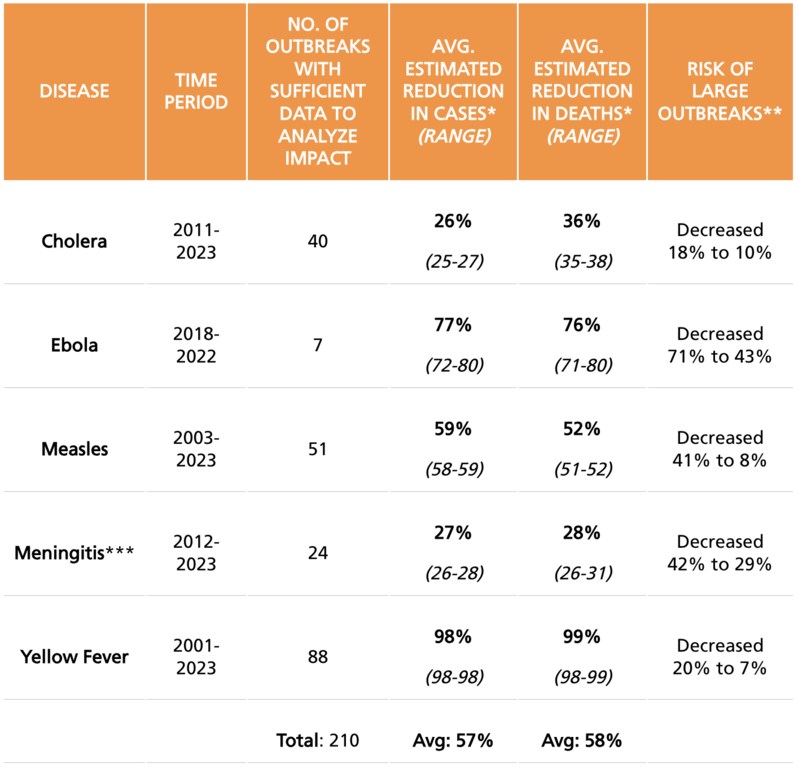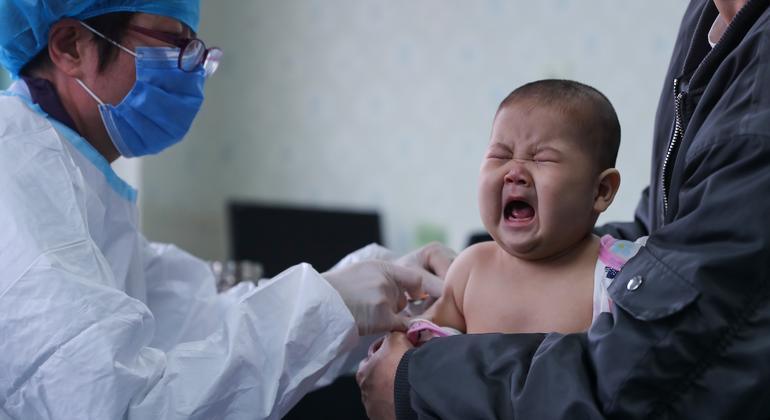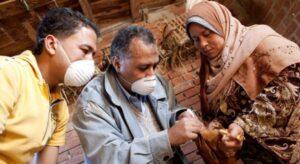The study conducted by Gavi, The Vaccine Alliance, in collaboration with the Australia Burnet Institute and published in The Authoritative British Medical Journal (BMJ) Global Health, analyzed 210 outbreaks in 49 countries with low income over a 23-year period.
It found that rapid vaccine installation during cholera, ebola, measles, meningitis and yellow fever had led to estimated reductions in diseases and deaths of almost 60 percent on average.
For diseases such as yellow fever and ebola, the effect was even more dramatic: Yellow fever deaths dropped by 99 percent, while Ebola death accidents fell by 76 percent.
The results emphasize not only the effectiveness of emergency vaccination, but also the critical role of readiness and speed in response to new threats.
“For the first time, we are able to quantify the benefits, in human and economic terms, by inserting vaccines against outbreaks of some of the deadliest infectious diseases,” said Sania Nishtar, CEO of Gavi.
“This study clearly shows the power of the vaccines as a cost -effective countermeasure to the increasing risk the world is facing from outbreaks.“
Gavi: a life -saving partnership
Gavi, Vaccine Alliance, is a unique global partnership that helps vaccinate almost half of the world’s children against deadly and debilitating diseases.
It brings together developing countries and donor government, the World Health Organization (WHO), the UN Children’s Fund (UNICEF), the World Bank, Bill & Melinda Gates Foundation and other key partners to expand access to immunization.
Gavi also maintains global vaccine storage for major diseases administered in coordination with WHO, UNICEF, Médecin’s Sans Frontières (MSF) and the International Federation of the Red Cross and Red Crescent Sociations (IFRC).
In collaboration with Gavi, Governments and Health Authorities, the UN Agency supports vaccination campaigns in some of the most remote regions of those wrote. In the picture here, a child receives a vaccine in the Solomon Islands in the Pacific.
Quantification of life and cost saved
In addition to reducing deaths and disability-adjusting life years, emergency vaccination during the 210 outbreaks studied almost $ 32 billion in economic benefits-from to avert premature deaths and years of life lost to disability.
The authors of the study say that this number is probably a conservative estimate as it does not include the broader social and macroeconomic effects of major outbreaks.
For example, the Ebola outbreak in West Africa 2014, which took place before an approved vaccine, cost the region estimated $ 53 billion. In contrast, later outbreaks reacted with emergency vaccines reduced deaths reduced by three -quarters, and the threat of regional spread was dramatically lowered.

Results of illness
Disease for disease gains
The study provides a breakdown of vaccine efficiency in illness.
MeslingerOne of the most infectious viruses that became known, causes cases to fall by 59 percent and deaths by 52 percent thanks to outbreak campaigns.
Yellow fever So the biggest gains, with emergency vaccination almost elimination of death – a decrease of 99 percent.
Cholera and meningitisThere are often communities with limited access to healthcare and infrastructure, so more modest but still meaningful reductions in cases and deaths.
Vaccinations helped reduce cholera cases and deaths by 28 percent and 36 percent over 40 cholera outbreaks between 2011 and 2023. For meningitis, cases and deaths fell by 27 percent and 28 percent over 10 years respectively.
Vaccines, Covid-19 and future threats
Coronavirus “> Covid-19 Pandemic was a sharp reminder of the value of vaccines, Which saved an estimated 20 million lives globally in the first year of rollout aloneAccording to the respected and influential Lancet Medical Journal.
Nevertheless, the pandemic also disturbed routine immunization, which led to a dangerous decline in covering speeds for diseases such as measles and polio. The Gavi study emphasizes that emergency vaccination should be paired with strong routine immunization systems to prevent future outbreaks.
Looking ahead, Gavis Strategy 2026-2030 includes expanding warehouses, accelerates vaccine access for diseases such as MPOX and Hepatitis E and supports preventative campaigns in high-risk areas.



